Democracy and the Battle of Marathon
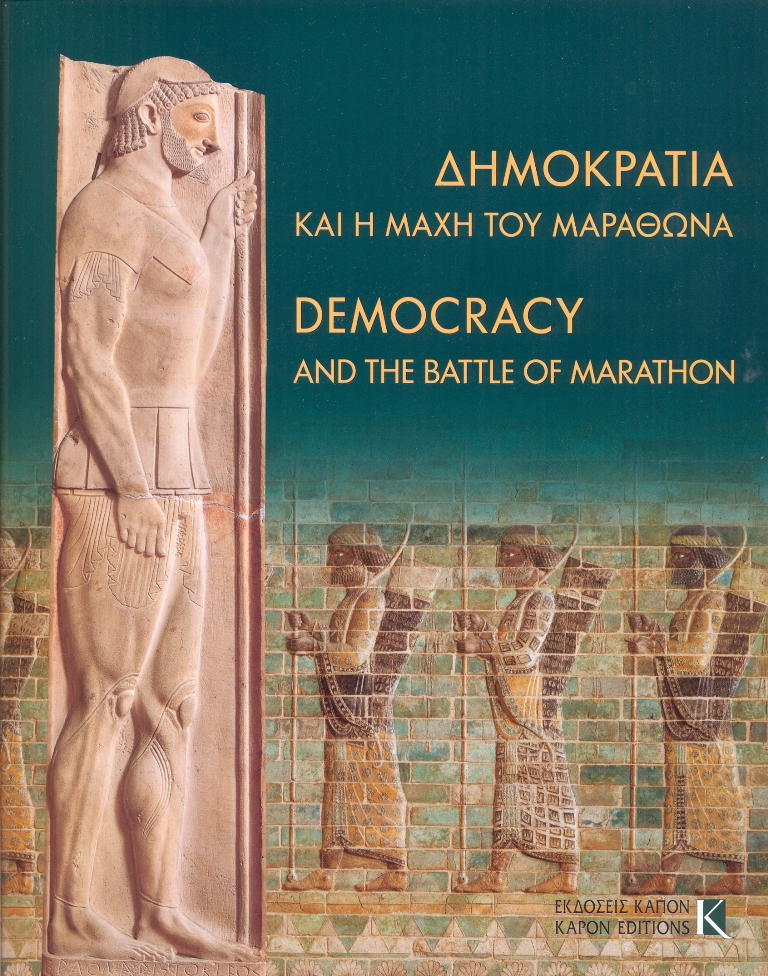
Marble grave stele of Aristion who is depicted as an Athenian hoplite in full kit. Work by the sculptor Aristokles, 520 - 510 BC. Athens, National Archaeological Museum.
The "Immortals" warriors of Darius I wearing precious clothes, holdings spears and arrows. Part from the Archers Frieze in Darius' palace at Susa, c. 510 BC. Paris, Louvre Museum.
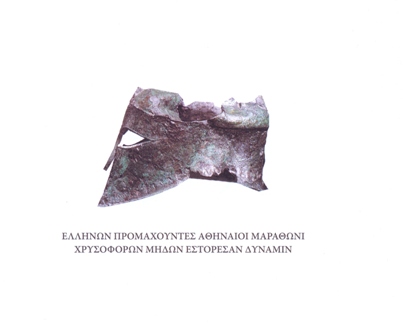
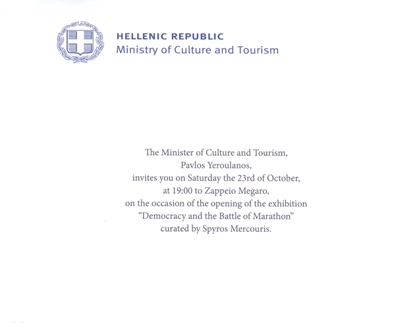
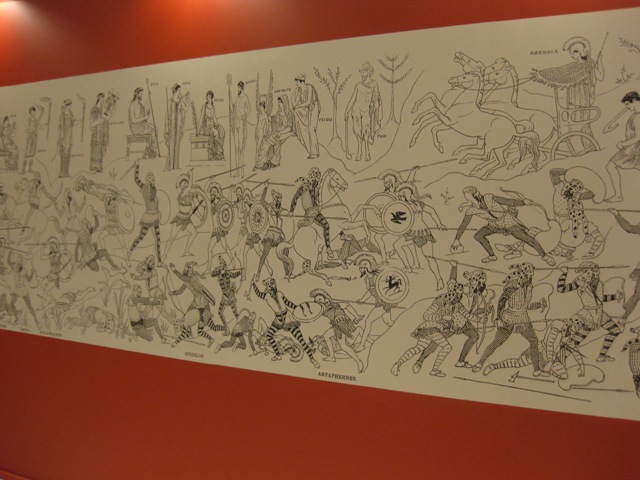
Battle of Marathon. Fictional representation of the battle, according to the three large paintings by the artists Mikon and Panaenus who decorated the Poikile Stoa (Painted Steel)
Drawing by Carl Robert. Athens, Gennadius Library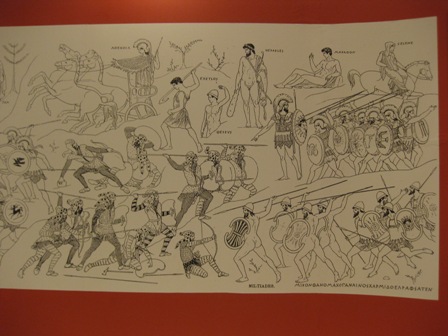
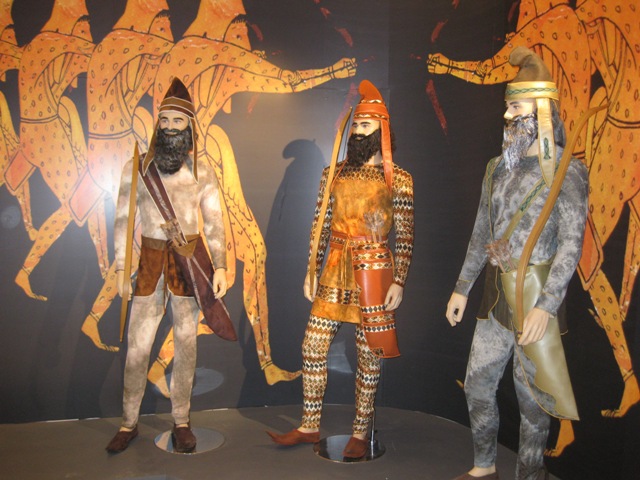
Persian soldiers
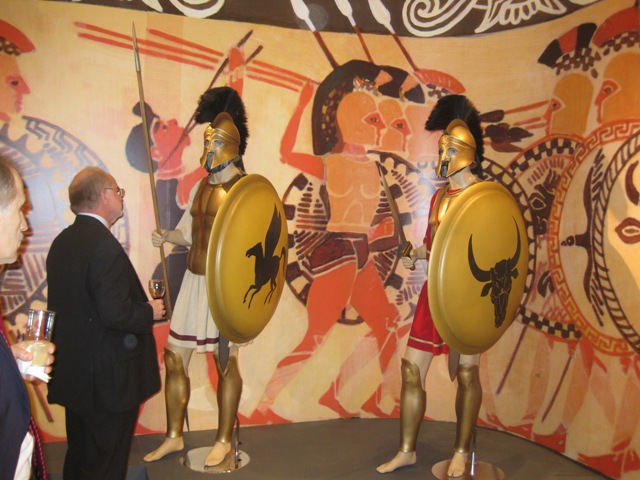
Guy Feux de la Crois, German diplomat and writer about the Marathon looking at the Greek soldiers
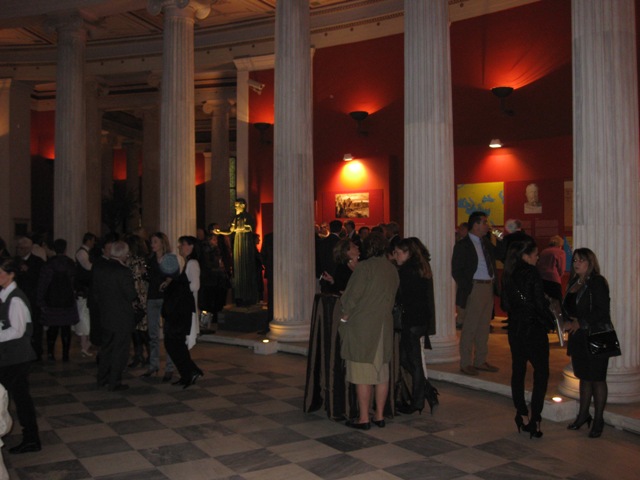
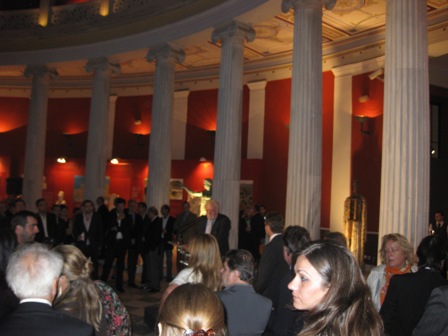
Exhibition opening by Spyros Mercouris, curator
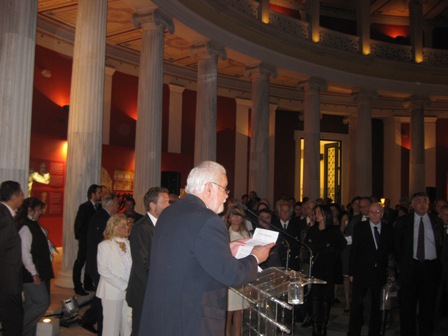
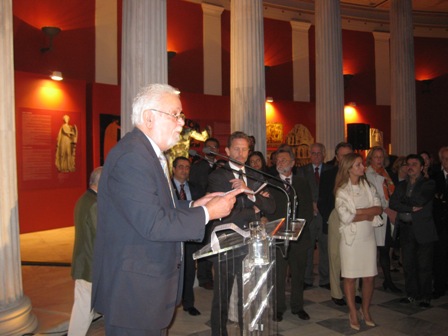
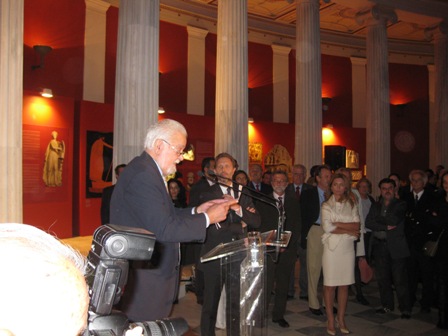
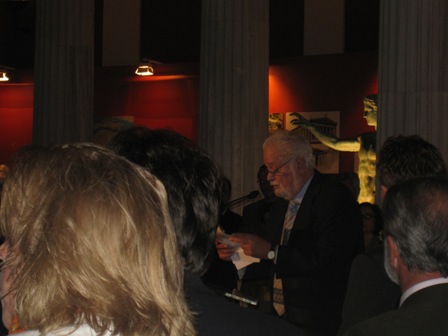
Introduction to the exhibition by Spyros Mercouris
"The power of Greek civilization is its continuity and duration. Greek culture is a vast and endless journey in the History of Humanity.
In Greece, at every step you take, with every meter you walk, if you just bend down and dig, you will find culture gushing out - welling out from the ground. A culture that goes back thousand of years. A culture that has lasted - that has never been surpassed - a culture that has spread, created, inspired and constantly reminds us of itself and its existence. Countless words have been said and written for this civilization.
The exhibition 'Democracy and the The Battle of Marathon' is a look at this glorious moment.
This year, 2010, is the 2,500th anniversary of the Battle of Marathon. A Battle which the hoplite-citizen knew, was not only to save his home and city, but also to safeguard the political rights of the newly established democracy. In fact, historically the Battle of Marathon is the first victory of democracy. This heroic Battle and anniversary must be celebrated.
Our exhibition shows the birth of democracy and some of its achievements, such as in education, philosophy, architecture, ancient drama, stressing the timelessness of these marvelous human accomplishments.
Also, on show are two maps. The one presents all the theatres and odeons in the ancient world (730) from the United Kingdom to Afghanistan and from the river Rhine to the Nile. 160 of these are still in use today with performances of ancient drama and other theatrical events. These venerable sights remind of the spread and eternity of Greek culture, speech and poetry.
The other map shows 1,300 Marathon races which are held every year around the world; and which honor the will, endurance and spirit of the modern runners and commemorate the splendor of the young Greek who run from Marathon to athens to declare the Great Victory.
One of the essential elements and xioms of culture is the respect and esteem for the diversity and the opinion of the other.
Cultural diversity is the basic heritage of thousands of years of History. It is the collective product of mankind.
In our exhibition we have also included in a prominent position a text with reference to the major and significant value of the Iranian-Persian culture, presenting the Iranian-Persian point of view of the Battle of Marathon nowadays. Thus, by highlighting the specificity of the other one is able to determine the Self as 'We', not 'I'."
Spyros Mercouris
Source: Exhibition catalogue "Democracy and the Battle of Marathon" Zappeion Exhibition Hall, 23 - 31 October 2010. Athens: Kapon Editions, p. 15
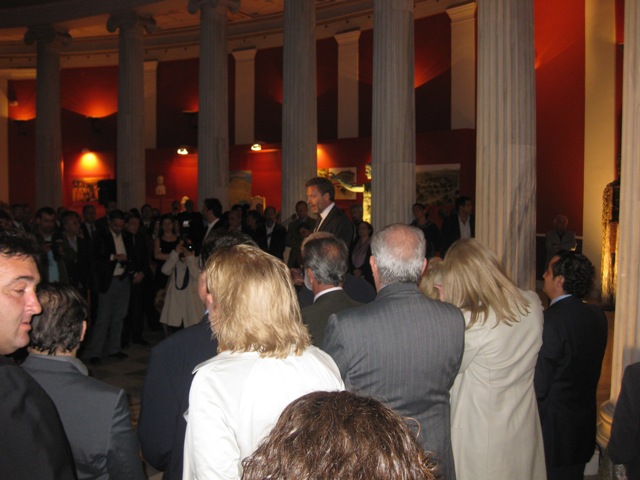
Pavlos Geroulanos, Greek Minister for Culture and Tourism opening the exhibition
"The 490 BC victory of the Athenians against the Persians is a critical moment of the Hellenic and the world history alike. Two thousands and five hundred years ago the Battle of Marathon was not just about two armies opposing each other, but mainly two worlds representing two different systems of values. No doubt our world would have been different today, if in that battle the power of might had prevailed instead of the values of Democracy.
The victory of the Greeks in the Persian Wars resulted in the survival and development of a newborn political system, that of Democracy. It highlighted to its supporters that the values of the democratic world , at the core of which is the individual, eventually prevails over those rammed down with a heavy fist.
In the subsequent years the sciences and arts flourished in a unique environment, at the democratic Greek city states, proving that the greatest merit of a culture is its own people. This is highlighted in the exhibition 'Democracy and the Battle of Marathon'.
May I thank every individual who contributed to the organization and formation of this exhibition and especially Spyros Mercouris who continues tirelessly to promote the Hellenic Culture."
Pavlos Geroulanos
Minister of Culture and Tourism
Source: Exhibition catalogue "Democracy and the Battle of Marathon" Zappeion Exhibition Hall, 23 - 31 October 2010. Athens: Kapon Editions
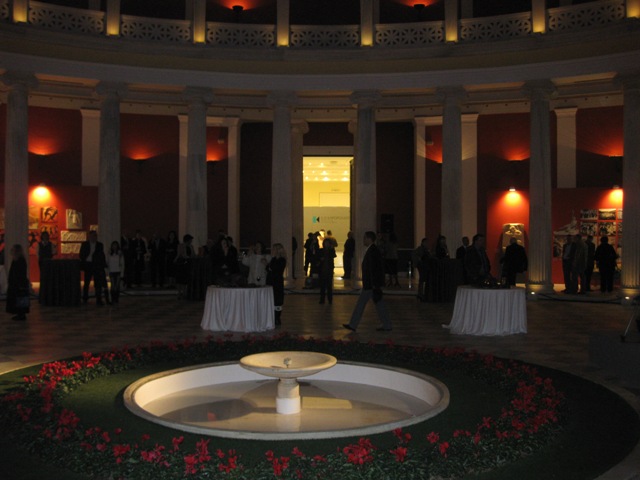
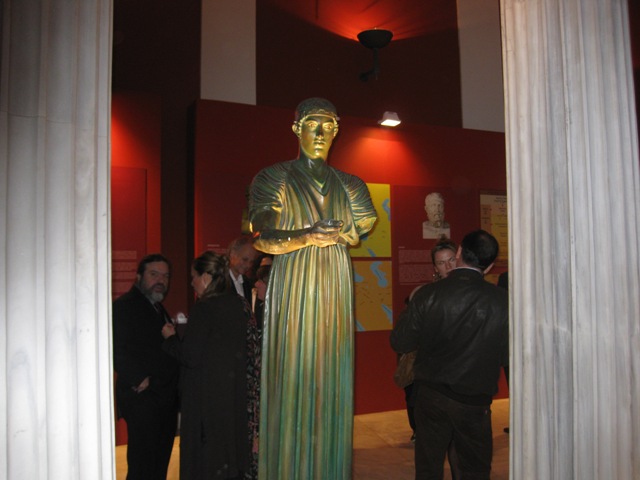
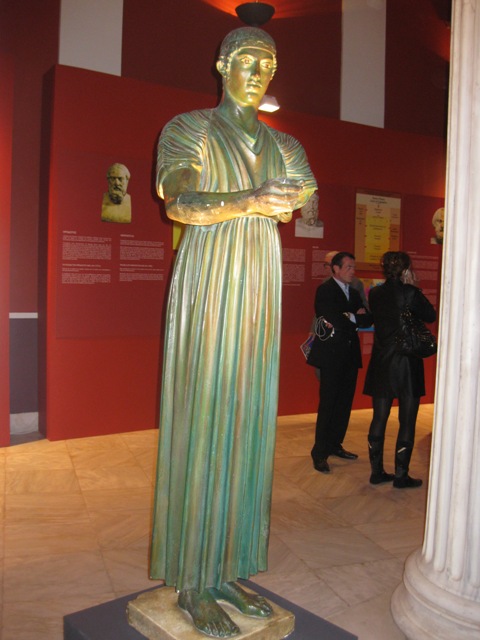
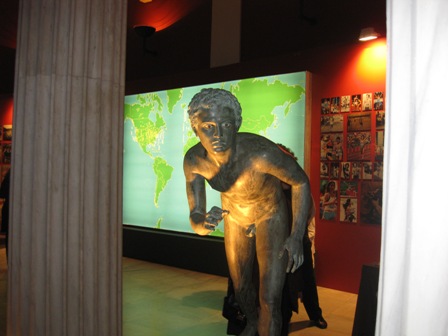
The runner
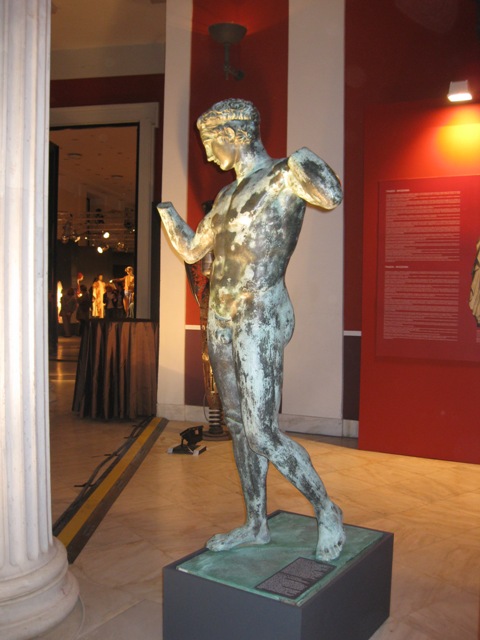
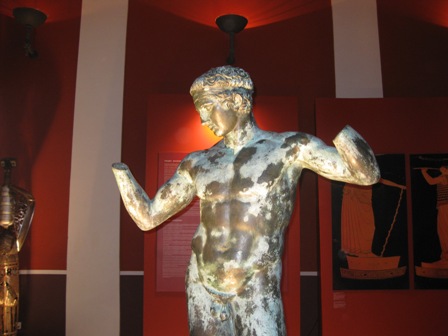
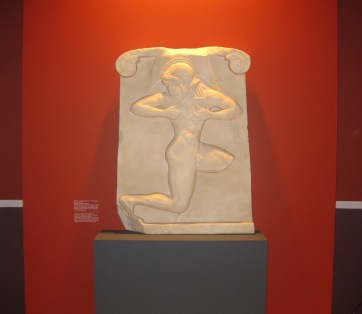
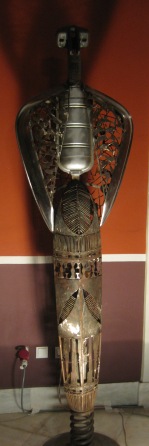
Modern sculpture
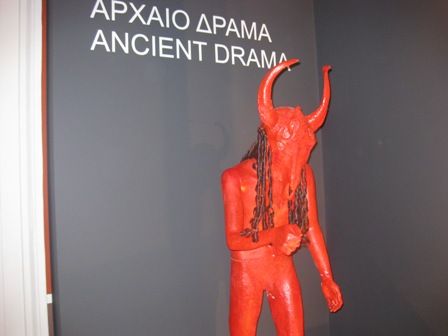
Mask and costume by Dionysis Fotopoulos for the performance "Dionysos"
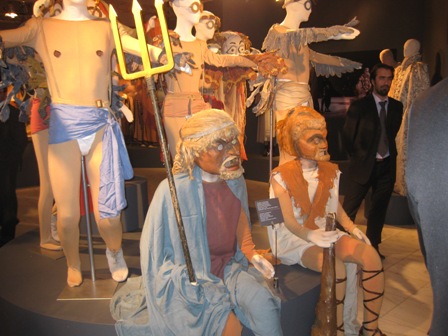
Kuhn's requisite
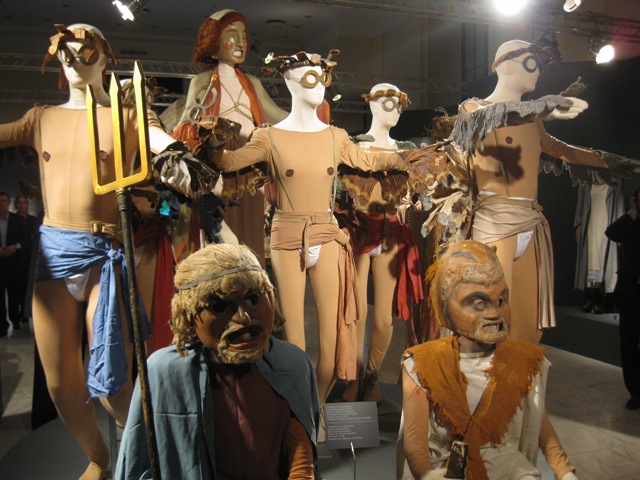

Ancient Greek vase
Hegel said a speculative sentence capable of determining itself the meaning of words is like the Greek vase an entity onto itself. He did not say anything about the miraculous drawings on the outside and what glaze they took after having been burned in a special way. Valery said indeed the highest art is the one which knows how to work with fire. Others would say that is why so many difficulties are incurred in the history of mankind as many do not know how to handle that fire inside. Call it burning desire but often man go to war in order to flee boredom (Thomas Mann) or else they burn from both sides the torch till the fire extinguishes itself and freedom is no more (Rosa Luxemburg).
Text and Photos by Hatto Fischer
Athens 25.10.2010
« O. :Lessons to be learned from Ancient Greece | OSMOSIS Photo Exhibition »
